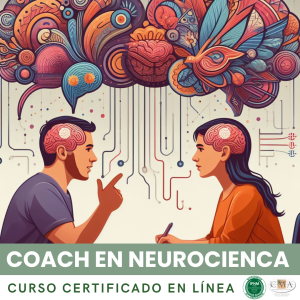
Rephrasing and reframing are two essential techniques in the arsenal of an Ikigai Coach to facilitate understanding, insight and a shift in perspective in the client. These powerful linguistic tools help to clarify the message, highlight resources and overcome perceived limitations.
Rephrasing involves repeating in other words what the client has expressed, while capturing the essence of his statement. It is a way to show active listening, to verify understanding and to reflect to the client the profound meaning of his words. For example, if the client says “I feel lost in my Ikigai search,” the coach could rephrase by saying “You feel you lack landmarks and direction in your quest for meaning.” This rephrasing validates the expressed emotion and invites to explore more in detail this feeling of bewilderment.
There are different types of rephrasing, each having a specific impact. An echo rephrasing uses the client’s exact words to signal that he has been heard. The synthesis rephrasing summarizes the key points in a concise sentence to clarify the message. The reflection rephrasing names the underlying emotion to facilitate emotional connection. The clarification rephrasing checks understanding by proposing an interpretation for validation.
The art of rephrasing lies in the choice of the type of rephrasing adapted to the context and in the accuracy of the words used. It is important to stay true to the meaning expressed by the client, while bringing a touch of clarity and depth. Rephrasing often paves the way for a deepening of exploration, generating reflection on the meaning of his own words in the client.
Reframing, on the other hand, consists in proposing an alternative perspective on a situation or belief, in order to broaden perception. It is an invitation to consider things from a new angle, to break out of the usual framework of thought to consider other possibilities. Reframing is particularly useful for overcoming limiting beliefs and blockages that hinder the realization of Ikigai.
For example, if the client expresses the belief “I am too old to change path and realize my Ikigai”, the coach could propose a reframing saying “What if your life experience was precisely a precious asset to give meaning to your new path?”. This reframing invites to consider age not as a brake, but as a potential resource in the Ikigai quest.
Reframing can rely on different levers, such as context change, reevaluation of assumptions, exploration of exceptions or highlighting positive intentions behind a behavior. The aim is to foster mental flexibility and open up new fields of possibilities for the client.
It is essential to use reframing with subtlety and respect, by proposing alternative perspectives without imposing them. The most powerful reframing is the one that the client appropriates and integrates into his own reflection. The Ikigai Coach can sow seeds of reframing throughout the coaching process, by asking open questions and by sharing pertinent observations.
Rephrasing and reframing are precious allies to help the client clarify his Ikigai and overcome obstacles on his path. By mastering these techniques, the Ikigai Coach strengthens his ability to create awareness and to stimulate sense-bearing perspective changes.
As with other coaching skills, practice and reflexivity are essential to refine one’s mastery of rephrasing and reframing. The Ikigai Coach can train to rephrase in various situations, observing the impact of his interventions on the dynamics of the conversation. He can also develop his creativity by exploring different reframing angles and drawing inspiration from examples from various fields.
By integrating rephrasing and reframing into his practice, the Ikigai Coach enriches his toolbox to co-create with the client a transformational dialogue space. These techniques support the emergence of new perspectives and the release of the client’s potential in the realization of his Ikigai.
Key Takeaways:
1. Rephrasing and reframing are two essential techniques for the Ikigai Coach, enabling message clarification, illuminating resources and overcoming perceived limitations.
2. Rephrasing consists of repeating in other words what the client has expressed, while capturing the essence of his statement. It demonstrates active listening, verifies understanding, and reflects the profound meaning of the client’s words.
3. There are different types of rephrasing: echo (repeats exact words), synthesis (summarizes key points), reflection (names underlying emotion), and clarification (verifies understanding by proposing an interpretation).
4. Reframing involves proposing an alternative perspective on a situation or belief, in order to broaden perception and overcome limiting beliefs and blockages.
5. Reframing can rely on different levers, such as context shift, reevaluation of assumptions, exploration of exceptions, or highlighting positive intentions.
6. Subtle and respectful use of reframing is essential, offering alternative perspectives without imposing them.
7. Practice and reflexivity are key to refining mastery of rephrasing and reframing, by training in various situations and exploring different reframing angles.
8. By integrating these techniques into his practice, the Ikigai Coach enhances his toolkit to co-create with the client a transformational dialogue space, supporting the emergence of new perspectives and the liberation of the client’s potential in achieving his Ikigai.
👉 To download docx (Editable) file click here : Click here
👉 To download PDF file click here : Click here
👉 To download MP3 file click here : Click here




